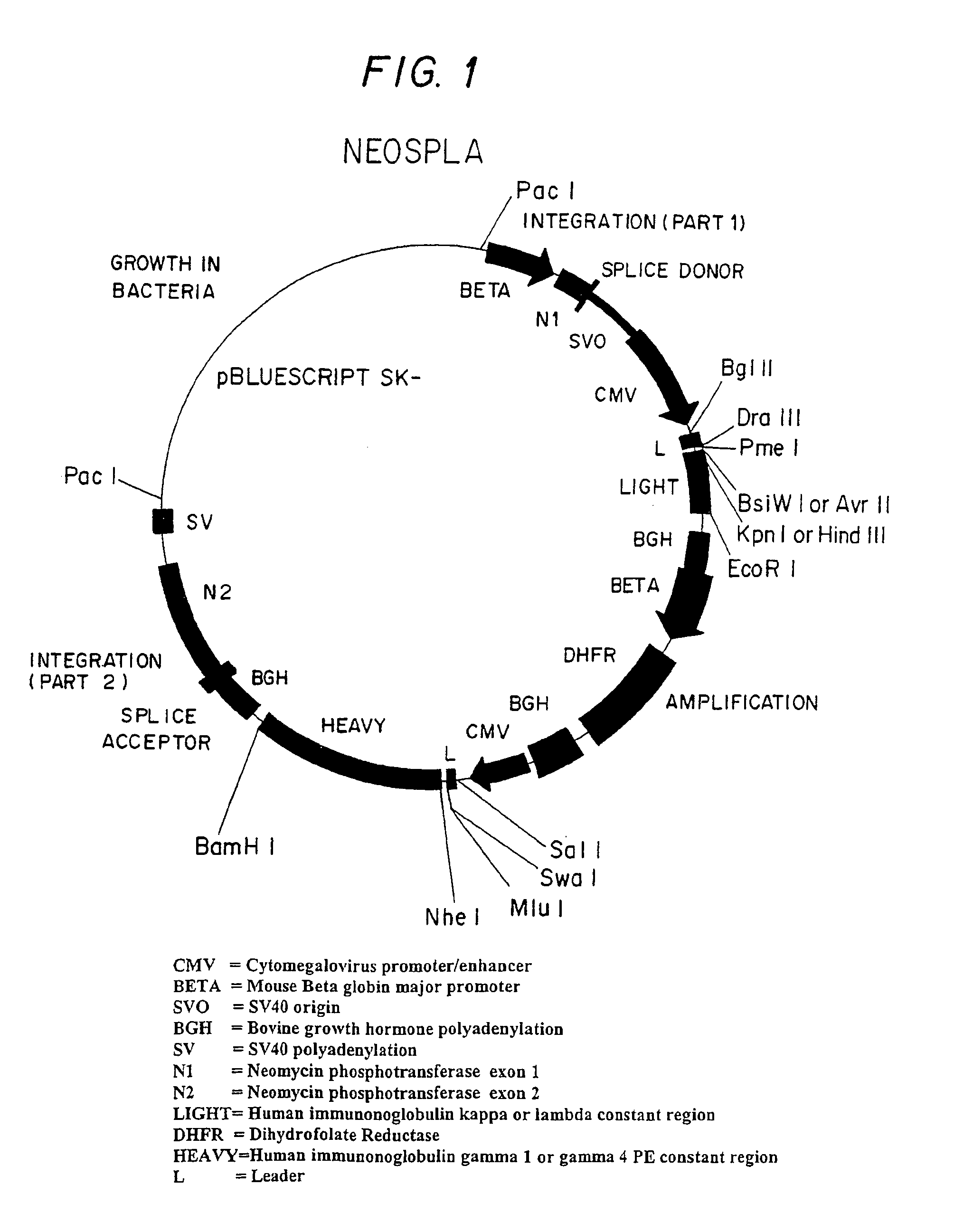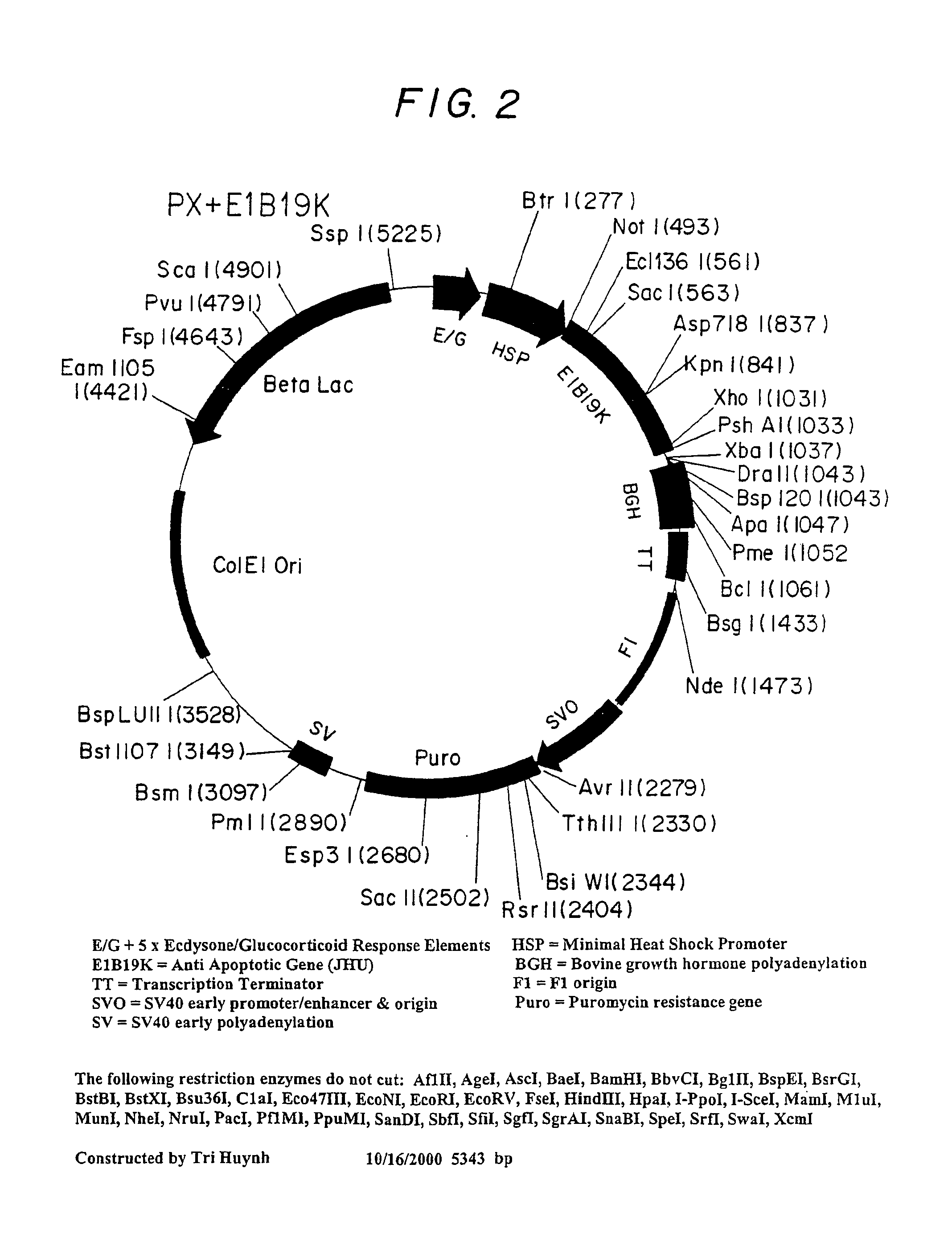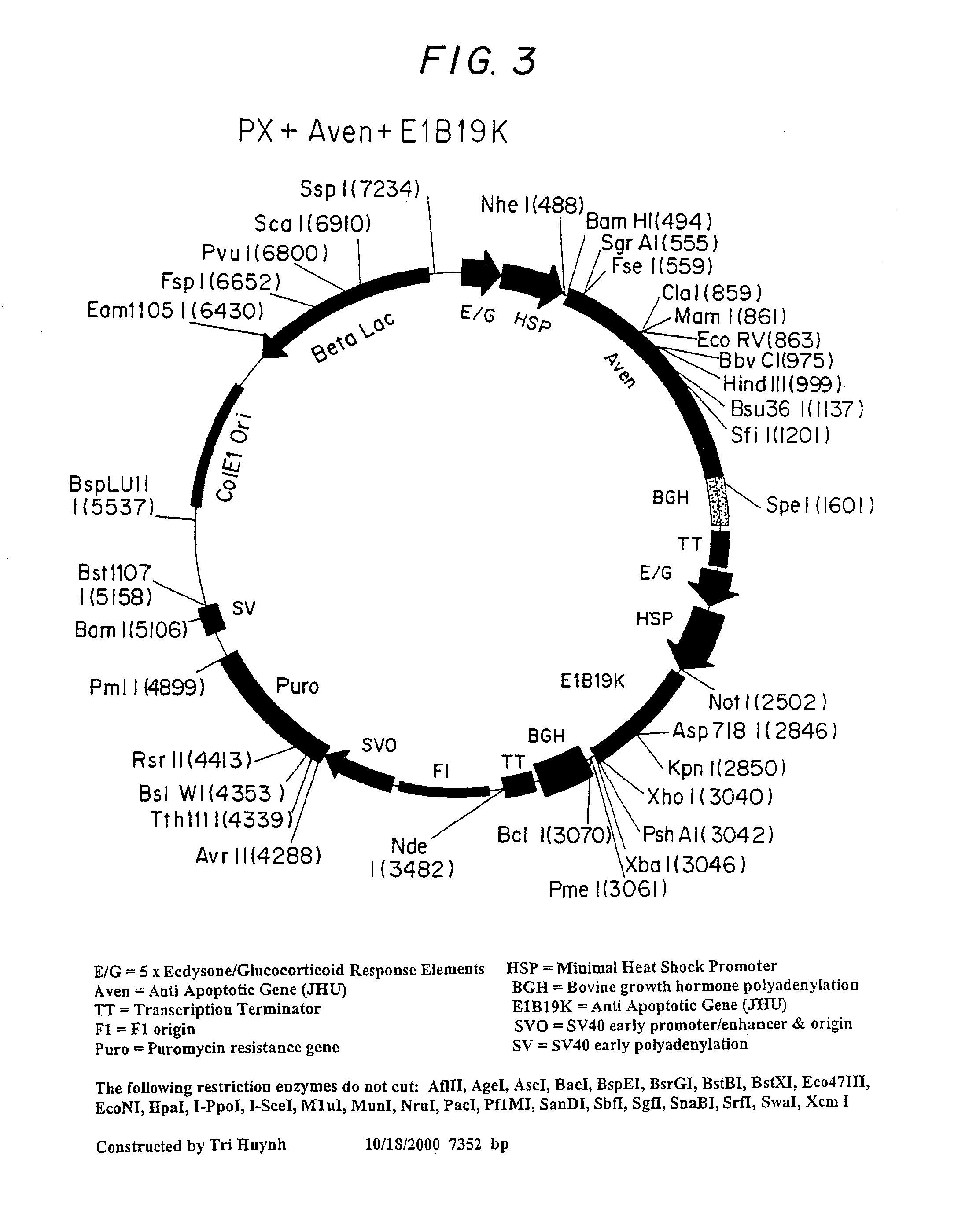Inhibition of apoptosis process and improvement of cell performance
a technology of apoptosis and cell performance, which is applied in the direction of immunoglobulins, peptides, drugs, etc., can solve the problems of cell death, high-value therapeutic or diagnostic proteins produced by eukaryotic cells in the pharmaceutical or commercial manufacturing environment, etc., to prevent or delay the programmed cell death, and increase the production of cell-related products
- Summary
- Abstract
- Description
- Claims
- Application Information
AI Technical Summary
Benefits of technology
Problems solved by technology
Method used
Image
Examples
example 1
Vectors and Transfection
[0055]An IDEC proprietary expression vector, referred to as NEOSPLA (FIG. 1), contains the neomycin phospotransferase gene divided into exons 1 and 2, the human immunoglobulin light chain coding for antibody IDEC 131, the murine dihydrofolate reductase gene, and the human immunoglobulin heavy chain gene coding for antibody IDEC 131. This NEOSPLA vector was used in the first round of transfections during the development of the cell lines of the preferred embodiment of this invention. The NEOSPLA expression vector is substantially described in U.S. Pat. Nos. 5,648,267, 5,733,779, 6,017,733, 6,159,730, all four of which are incorporated in their entirety by reference herein.
[0056]A humanized anti-CD154 antibody (IDEC 131) is the desired high value protein produced by the embodiments of this invention as described herein. CD154 is a ligand for CD40, which is a cell surface molecule of immature and mature B lymphocytes, which when cross linked by antibodies, induc...
example 2
Derivation of Cell Populations
[0063]Mammalian cells used in the commercial manufacture of therapeutic proteins, such as Chinese Hamster Ovary (CHO) cells, are immortalized cell lines which can continue to undergo continuous rounds of division, generation after generation, indefinitely. This stands in marked contrast to primary cultures of normal diploid animal cells, which have a finite lifespan that manifests as senescence and cessation of division at approximately 50 generations.
[0064]In general, the standard level of homogeneity of a cell line is achieved by having a cell population derive from a single cell. It is not considered to be absolutely provable that a population has a single cell ancestral source, but rigorous methods have been established which are accepted as creating a very high probability that this is the case. This procedure, known as single cell cloning, is accomplished by diluting suspended cells in culture medium to a point where, statistically, there is less ...
example 3
Cell Line History
[0066]The CHO 5C11 cell line, the immediate parent of the cell lines described in this invention, has two features significant features that support the expression of the anti-apoptotic genes and demonstration of the inventive method and preferred embodiments described herein. The parent cell line secretes a desired protein, antibody IDEC 131, and it expresses a cytosolic hybrid ecdysone steroid hormone receptor, which is a component of a system whereby expression of anti-apoptotic genes is induced.
[0067]The CHO 5C11 cell line originates from the Chinese Hamster Ovary cell line, CHO DG44, developed at Columbia University (Urlaub, PNAS 83 (17): 6519-23 (1986)). The CHO DG44 line is deficient in its expression of dihydrofolate reductase (DHFR), and is thus dependent on the expression of a transfected DHFR in order to acquire a resistance to methotrexate, a toxic agent used to select for genomic amplification. In the development to its present state, the CHO 5C11 line ...
PUM
| Property | Measurement | Unit |
|---|---|---|
| volume | aaaaa | aaaaa |
| volume | aaaaa | aaaaa |
| volumes | aaaaa | aaaaa |
Abstract
Description
Claims
Application Information
 Login to View More
Login to View More - R&D
- Intellectual Property
- Life Sciences
- Materials
- Tech Scout
- Unparalleled Data Quality
- Higher Quality Content
- 60% Fewer Hallucinations
Browse by: Latest US Patents, China's latest patents, Technical Efficacy Thesaurus, Application Domain, Technology Topic, Popular Technical Reports.
© 2025 PatSnap. All rights reserved.Legal|Privacy policy|Modern Slavery Act Transparency Statement|Sitemap|About US| Contact US: help@patsnap.com



